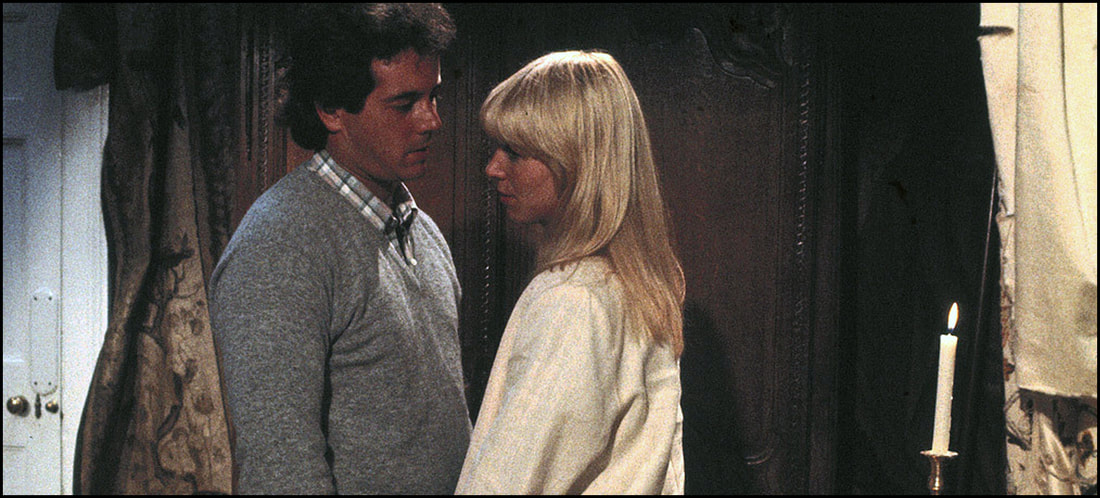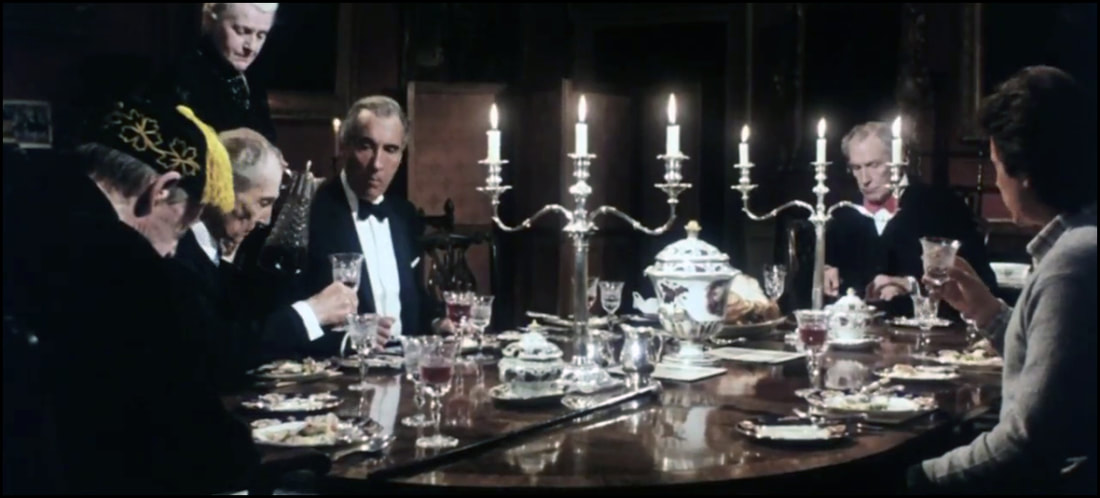Depending upon one’s perspective, it wasn’t until perhaps the 1920’s and 1930’s that Horror found its first ‘faces.’ It was with the release of such groundbreaking entries as 1931’s Dracula that Bela Lugosi became one to watch. That same year, Universal Pictures delivered Frankenstein – based on the novel by Mary Shelley – to theaters; and – with it – the great Boris Karloff made his ascent into our collective consciousness. Watching the two of them work their screen magic, audiences were horrified – by design, mind you – with the machinations of evil creeping their way into one project after another. Horror’s popularity would dip to a small degree in the late 30’s and well into the 1940’s – what with our world being at war, Horrors were real enough on the front pages of newspapers everywhere – but it would make a resurgence in big ways in the near future.
This second wave of Horror stars were debatably a little less about creature comforts and a bit grander on the theatrical scale. Names like Christopher Lee – a man who could deliver screen menace with even a casual glance – or Peter Cushing – perhaps better known for taking the fight to more villains than he ever played one – became commonplace. And … Vincent Price? Though he may’ve taken the long road to find out just how well he played characters who could chew scenery like no other, not even age diminished the man’s ability to imbue each and every role he took with his signature vocals and an almost deadpan, understated approach to antics serious or comic. As I said, Horror came back … and it came back bigger than life with these highly regarded talents.
Hollywood knows a good thing when it sees it, so producers naturally paired up these respective legends across several handfuls of projects … and, yet, it was only twice that saw all three Thespians collaborating under the same cinematic roof. The first was 1970’s Scream And Scream Again, a criminal procedural with a Horror backdrop that came to distribution by way of Amicus Productions. While I’ve not seen it, I’ve heard that it’s only true distinction is the fact that it brings these men together in a single story. The second, however, was probably a bit more to a Horror audiences’ liking: 1983’s House Of The Long Shadows cast the Horror royalty as ghosts descended from the same family all haunting an old estate being used by a vacationing American writer to pen his next novel in silence. Producers also enlisted the revered John Carradine into the cast (as just one more ghost, if only one were needed), and it seemed that nothing could go wrong.
Well …
Having now seen it myself for the first time, I can see why.
(NOTE: The following review will contain minor spoilers necessary solely for the discussion of plot and/or characters. If you’re the type of reader who prefers a review entirely spoiler-free, then I’d encourage you to skip down to the last few paragraphs for the final assessment. If, however, you’re accepting of a few modest hints at ‘things to come,’ then read on …)
From the film’s IMDB.com page citation:
“An American author finds a dilapidated Welsh manor perfect for writing until the residents host a bizarre family reunion.”
When is a Horror not really a Horror?
Simply, this would be when the Horror was actually conceived, made, and intended to be a Comedy, as was the case with House Of The Long Shadows. Directed by Pete Walker from a story by Michael Armstrong, Earl Derr Biggers, and George M. Cohan, the flick unspools very much like it was loosely lampooning the haunted house pictures of an early era, perhaps even the kinds of projects previously made famous by its cadre of Horror Royalty … John Carradine, Vincent Price, Christopher Lee, and Peter Cushing. There isn’t a hand with enough fingers big enough to count the number of scary entries this cavalry saved from obscurity by their efforts alone; and it’s pretty obvious that their presence alone was intended to give this project the fortitude required to, perchance, make box office history.
And yet their storied careers had little to no effect on Shadows’ lack of success, probably owed more to a lackluster and poorly executed idea than it did any clout they singly or collectively mustered.
However, once he arrives at Baldpate Manor the young man is surprised to find it anything but empty. The caretakers are presently preparing the expansive estate for a dinner of the Grisbane family – its original owners – who are gathering one last time on the eve of a rather sordid past anniversary. Before the night is over, the Grisbanes are hoping to put a lingering curse well behind them, but all Magee wants to do is finish his novel and maybe even squeeze in a bit of loving with Allyson’s professional assistant Mary (Julie Peasgood) who is also along for the festivities. It doesn’t take long before the curse is in effect once more, and the bodies start piling up.
While the premise sounds like a decent foundation around which to spin any yarn, Shadows central failure is that none of the screen talent seems to be taking any of it very seriously. Oh, the learned talent has definitely forgotten more about chewing scenery than most in the acting business ever learn, and all involved hit their marks as required for their respective scenes; but there’s never any true sense of danger, mostly because it kinda/sorta starts to less like dire straits and more like loose comedy. At heart, Shadows evolves more into a weird caper – if you think things are not as they appear, then you’ve won half the battle – and its resolution even appears a bit rushed given the lengths to which the shenanigans stretch.
At the risk of spoiling it, Shadows is a ruse, both on its American lead as well as the viewing audience. Events happen even when the author isn’t present; and – if this was all meant to confuse him over a bet – we’re not supposed to question why we’re being shown something that he’s not. It’s convenience for the sake of convenience, and not everything in here ‘adds up.’ By the last reel, we learn that a great deal of the script was, in fact, little more than artifice … all made up to apparently ‘make a point’ to Magee about what is and isn’t possible or some such nonsense. (You’ll have to trust me when I say it just isn’t very clear.) Now, the lengths to which Allyson and his paid staff would have gone in order to make this whole charade possible is M-A-S-S-I-V-E, so massive that I suspect it couldn’t have been pulled off … except for in the movies. Sadly, movies don’t require that everything make perfect sense; so if you can accept that the wool was not so much pulled over Magee’s eyes as it was yours, then you might forgive this one’s obvious deception.
(cue maniacal and devilish laughter)
House Of The Long Shadows (1983) was produced by London-Cannon Films. DVD distribution (for this particular release) has been coordinated by the fine folks at Kino Lorber. As for the technical specifications? While I’m no trained video expert, I found the sights-and-sounds to the presentation to be exceptional from start-to-finish. Lastly, if you’re looking for special features? The disc boasts not one but two audio commentaries along with a feature-length documentary (a bit tedious in a few spots) that revisits the production with surviving members of the cast and crew. There’s also an interview with the director and (the usual) theatrical trailer to enjoy.
Recommended, but … only for diehard fans of Classic Horror cinema as newbies and/or contemporaries might find very little to enjoy in this somber paced “chiller” (their words, not mine).
Readers, there is the germ of a very, very, very good idea at the heart of House Of The Long Shadows (1983); and – given the fact that it’s so reasonably well-made and hosts what should be regarded as a cast of ‘Horror royalty’ – I suspect a great deal of viewers will forgive director Walker and his cast and crew out of respect for its epic attempt. My problem – one I suffer frequently, it would seem – is that Shadows is the kind of the story that the more one thinks about it the less it makes sense; so I’ll dispense with the goodwill and, instead, just agree that, yes, it sure was grand seeing some of cinema’s biggest names in genre brought together for one last hurrah. They deserved better … as did we.
In the interests of fairness, I’m pleased to disclose that the fine folks at Kino Lorber provided me with a complimentary Blu-ray of House Of The Long Shadows (1983) by request for the expressed purpose of completing this review. Their contribution to me in no way, shape, or form influenced my opinion of it.
-- EZ





 RSS Feed
RSS Feed